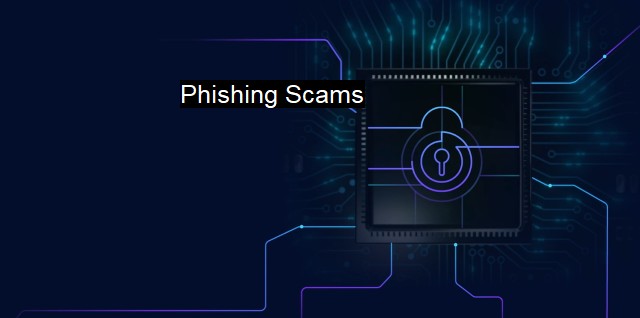What are Phishing Scams?
The Rise of Phishing Scams: Deceptive Tactics Employed by Cybercriminals to Steal Sensitive Information
Phishing scams, a significant threat in our increasingly digital era, have become a buzzword within realms of cybersecurity and antivirus protection. As we navigate the digital world, it is crucial to understand what phishing scams are, their various types, how they work, and how to protect oneself against them, particularly given their increasing sophistication.Phishing scams refer to fraudulent attempts aimed at deceiving people into revealing sensitive information. This personal data, often belonging to unsuspecting internet users or companies, includes but is not limited to, confidential financial data (credit card information, bank account details), personal identification data (Social Security number), and login credentials to various accounts. The attacker, or phisher, then exploits this information for criminal activities, most commonly identity theft and financial fraud.
Phishing typically occurs via electronic communication channels, particularly email, hence the term, which is a play on 'fishing' to reflect the dubious attraction method. Analogous to a fisherman casting a baited line in hopes a fish will bite, the cybercriminal sends out mass emails masquerading as a credible institution or person capable of inspiring trust in the recipient. This seeming credibility entices recipients into following the embedded instructions, whether it is to share sensitive information directly, install harmful software, or visit an imitation website where further information is harvested.
There are several types of phishing scams evolving alongside digital and technological advances. In spear-phishing, the phisher first gathers information about the target before the attack. This profile, often developed from publicly accessible social media profiles, increases the relevancy of the email content, creating a seemingly personalized email that lowers the target's guard. Whaling, a subset of spear phishing, focuses on high-profile targets like executives or companies. Another example is 'clone phishing,' which involves replicating legitimate messages with replaced content to inform the embodied link or attachment with malicious data. there's SMiShing and vishing, which utilize text messages and voice, respectively, to reap confidential information.
Cybercriminals have found ways to exploit the current global scenario. With the upsurge in remote work and digital interactions due to the ongoing pandemic, coronavirus-themed phishing scams have spiraled. These usually involve emails purporting to be from reputed health organizations or offering resources for remote work, enticing users to click on malicious links and expose their data under the guise of attaining relevant information.
Defending against phishing scams requires comprehensive antivirus solutions supplemented with knowledge and vigilance. Antivirus software with real-time scanning and automatic updates aids in detecting and stemming off any malicious software that phishing attacks might implant. Internet security software usually extends this protection with features for safe browsing and secure transactions, warning against dubious websites, and encrypting transaction data.
While software solutions are crucial, human error often provides an opportune entry point for phishing attacks. This necessitates a continual education for all internet users, including identifying telltale signs of phishing emails such as generic greetings, spelling errors, fake domains, and unsolicited requests for personal information. it's essential to hover over links before clicking on them to preview the URL address and ensure it belongs to the entity claiming to have sent the email.
Phishing is a significant and ever-evolving cybersecurity threat necessitating robust antivirus software and informed user behavior. These burgeoning threats mandate an informed digital presence, making understanding phishing scams and their prevention an essential aspect of digital life management. The task indeed is daunting, but with a good balance of knowledge, vigilance, and appropriate technical support, we can successfully protect our sensitive data from cybercriminals.

Phishing Scams FAQs
What is phishing?
Phishing is a type of cyber-attack where scammers send fraudulent messages to trick individuals into revealing sensitive information such as passwords, credit card numbers, or social security numbers.How do cybercriminals use phishing scams?
Cybercriminals use phishing scams to obtain sensitive information from individuals and businesses, which they can then use to steal money, access sensitive data, or launch further attacks.What are some common signs of a phishing scam?
Some common signs of a phishing scam include suspicious URLs or email addresses, poor grammar and spelling, urgent or threatening language, and requests for sensitive information.How can I protect myself from phishing scams?
To protect yourself from phishing scams, you should verify the sender's identity before sharing any sensitive information, carefully review messages for signs of fraud, avoid clicking on links or attachments in suspicious emails, and install and regularly update antivirus software.| | A | | | B | | | C | | | D | | | E | | | F | | | G | | | H | | | I | | | J | | | K | | | L | | | M | |
| | N | | | O | | | P | | | Q | | | R | | | S | | | T | | | U | | | V | | | W | | | X | | | Y | | | Z | |
| | 1 | | | 2 | | | 3 | | | 4 | | | 7 | | | 8 | | |||||||